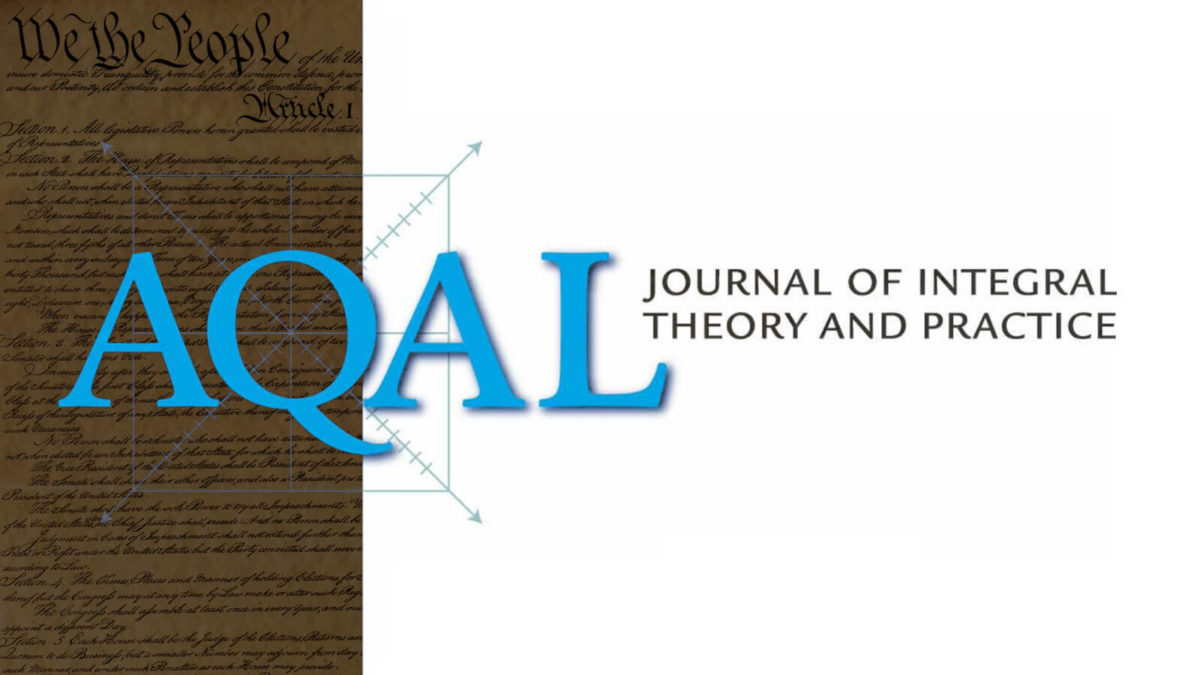The following article outlines the major approaches to constitutional interpretation and explains how either approach on its own ultimately leads to a narrow and incomplete understanding of the law, which ignores the rich reality that both interior and exterior perspectives carry. The author will introduce Integral Legal Theory as a method of interpretation that will allow each perspective its day in court while offering coherence to a jurisprudence gone slightly mad.
Introduction
In the U.S. alone, there are at least a dozen different methods of interpreting the law. These styles are diverse and most reject the validity of the other. For example, in February 2006, Justice Antonin Scalia, responding to the notion that the constitution is dynamic and not static, was reported to say, “You would have to be an idiot to believe that. The constitution is not a living organism. It is a legal document. It says some things and doesn’t say others.”1 Scalia, an “originalist” in his interpretive approach, sees little worth in any style that relies on using morals and values when interpreting the law. Alternatively, Professor Ronald Dworkin in his many books and articles, lays out an equally coherent argument on why a judge ought to use subjective, moral principles set by society in deciding a case. The division between the two is alive and well with their followers writing law review articles every year that defend their particular approach as superior to the other. The rift continues, and we are left to choose sides.
The deeper truth, however, is that each of these approaches tells only a part of the story regarding the legal issue in question. Scalia represents a more empirical, text-driven approach to legal interpretation while Dworkin subscribes to a more subjective, interior-driven approach. Either approach on its own ultimately leads to a narrow and incomplete understanding of the law (no matter the interpretive style), which ignores the rich reality that both interior and exterior perspectives carry. The following article will introduce Integral Legal Theory as a method of interpretation that will allow each perspective its day in court while offering coherence to a jurisprudence gone slightly mad.
To understand the basic principles of this approach we will employ American philosopher Ken Wilber’s “all-quadrant, all-level” model (otherwise known as Integral Theory) to the interpretation of law. Integral Theory is extraordinary in that its purpose is to recognize and take into account the various perspectives at play in any situation and not reduce one perspective to another. Each is recognized for its partial piece of truth that it provides, no more or less. When each perspective is taken into account simultaneously, a clearer and therefore better understanding of the situation is instantly available to the interpreter. As a result, justice can be better served.
Become a member today to access this Journal article and support the global emergence of Integral consciousness
Membership benefits include:
Premium Content
Receive full access to weekly conversations hosted by leading thinkers

Journal Library
Receive full access to the growing Journal of Integral Theory & Practice library

Live Experiences
Stay connected by participating in Integral Life live events and discussions
Courses & Products
Get unlimited 20% discount off all products and courses from our friends and partners

Free Bonus Gifts
Download The Integral Vision eBook by Ken Wilber (worth $19 on Amazon) & The Ken Wilber Biography Series

Support of the movement
Support our mission of educating and spreading integral consciousness that is more critical than at any time in its history
About Mark Fischler
Mark Fischler is a Professor of Criminal justice and current program coordinator for the criminal justice and criminology programs at Plymouth State University. Prior to joining the Plymouth State faculty, he practiced law, representing poor criminal defendants for the New Hampshire Public Defender’s Office. Mark has worked extensively with alternative theoretical models in law, constitutional law, and higher education, and has published on integral applications to teaching, being a lawyer, and legal theory. His focus in the classroom is ethics and criminal procedure, and is well respected for a teaching philosophy that emphasizes recognizing the humanity and dignity of each student. Professor Fischler was awarded the outstanding teaching award at his university in 2014. He currently offers a weekly Spiritual Inquiry class through Satya Yoga Studio.

